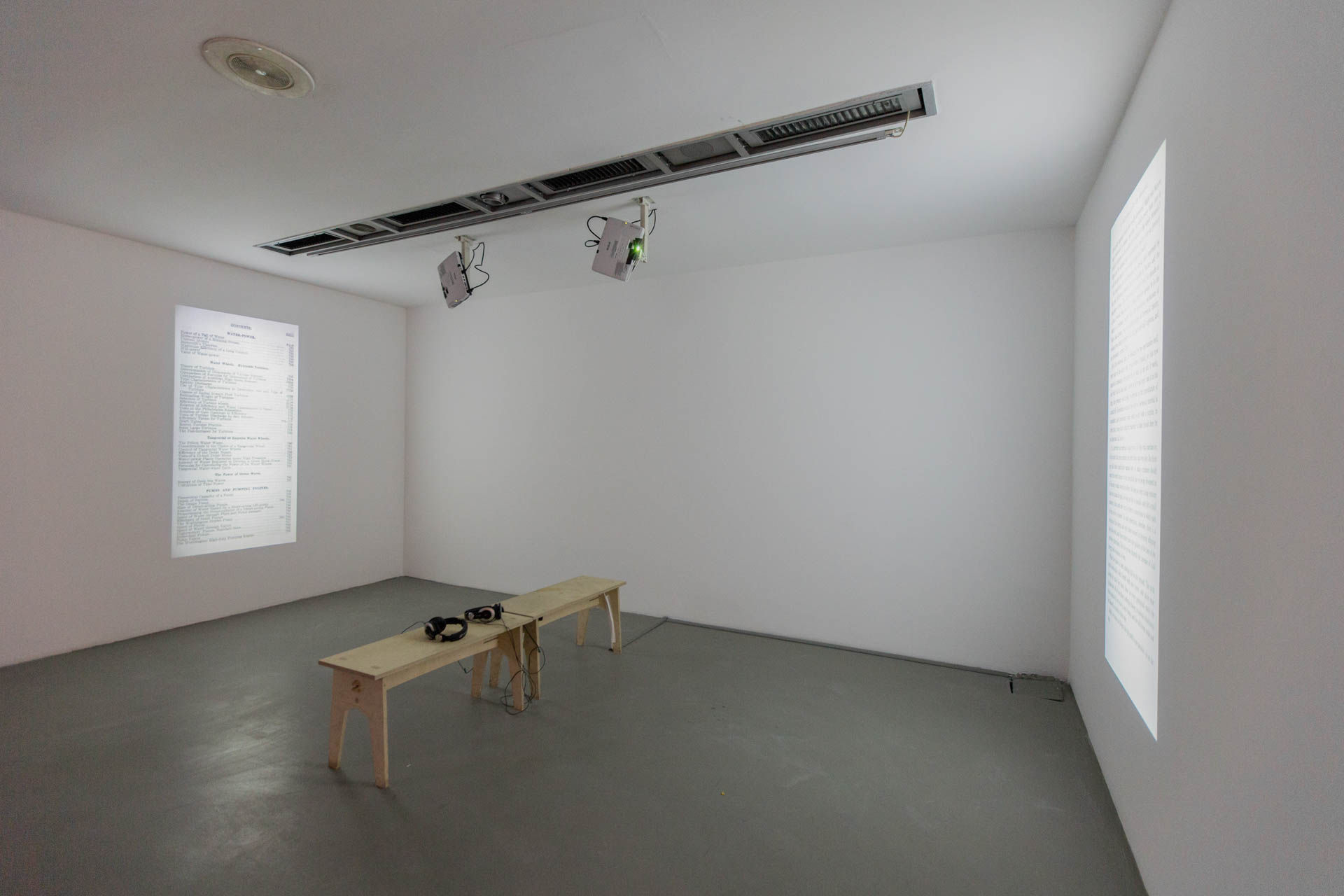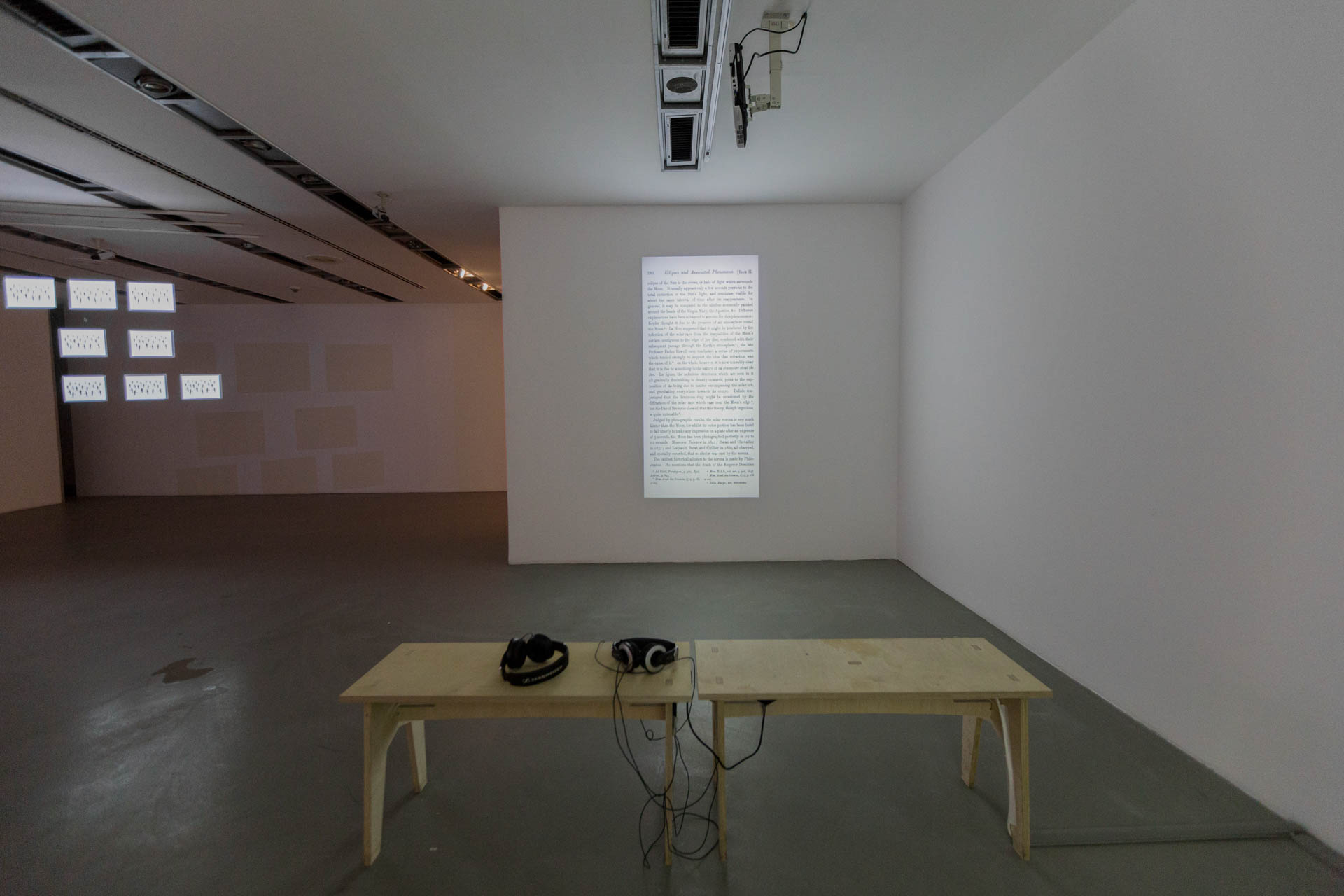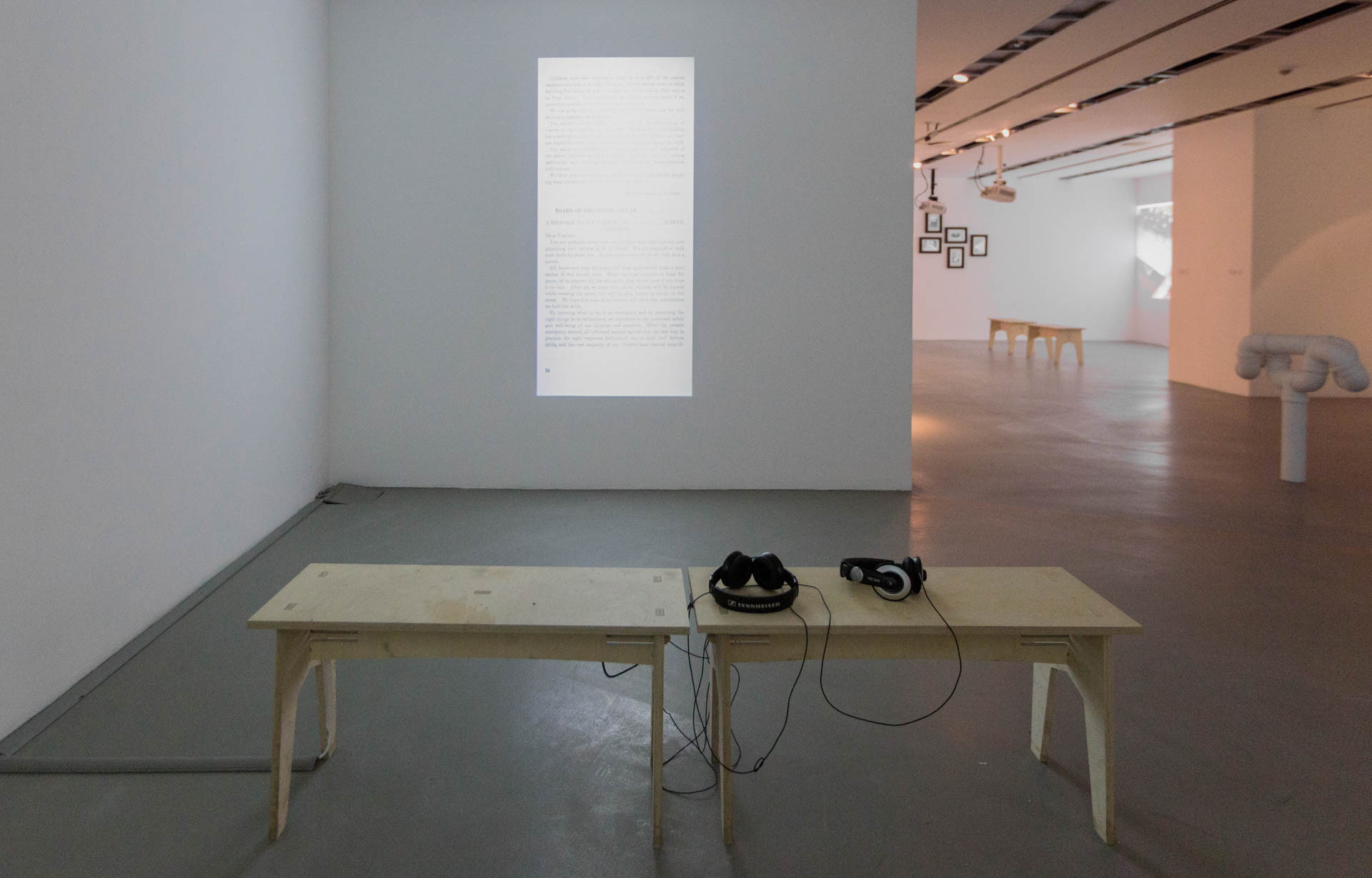Dyslexic
Installation: Two-Channel HD Video
2015
Dyslexic is a multi-channel video installation that investigates the interplay between physical texts and digital representation, reimagining technical literature as a fluid visual experience. Presented as part of the 33rd Akbank Contemporary Artists Prize Exhibition between June 3rd and July 31st, 2015 at Akbank Art Center, İstanbul, the project dissects 19th and 20th-century scientific knowledge—from astronomy and mathematics to political reports and declassified intelligence documents—by converting static book pages into vertical page-to-frame video sequences. These pages, sourced from academic volumes and obsolete technical manuals, are accelerated into rapid, fragmented projections within a darkened room, collapsing hours of reading into fleeting sensory impressions.
Projection devices cast rapidly shifting pages onto the walls of a light-controlled environment, dissolving the stability of printed text into fragmented, fleeting imagery. This distortion mirrors the cognitive dissonance experienced in dyslexia, where letters and words become unstable, resisting coherent synthesis. The immersive setup immerses viewers in a disorienting loop of information overload, simulating the frustration and sensory saturation associated with decoding written language under duress. By compressing time and destabilizing visual hierarchies, the work questions the neutrality of information dissemination and the assumptions embedded in linear knowledge structures.
Technical and scientific texts, often framed as authoritative, are stripped of their permanence here. Pages of repair manuals or academic theories become transient, their content reduced to fleeting afterimages. This treatment critiques the fragility of institutional knowledge, particularly materials rendered obsolete by time or geopolitical shifts. The inclusion of marginalized documents—discarded manuals, expired reports—further questions which narratives endure and how cultural memory is curated.
The installation's mechanical rhythm—pages fluttering at speeds illegible—renders reading a visceral, almost physical process. The texts intended for systematic study are offered as fleeting impressions, privileged in terms of sensation rather than examination. This approach critiques the authority of technical writing, which generally represents itself as objective, by exposing its vulnerability to manipulation and decay. The inclusion of marginalised texts, such as outdated manuals or decommissioned documents, further underscores the vulnerability of institutional knowledge and the bias in its preservation.
Through its formal experimentation, Dyslexic encourages a consideration of how information is consumed, stored, or discarded. The narrative discontinuity and emphasis on sensory immersion redefine reading as an unstable, corporeal experience rather than passive intellectual engagement. By breaking down the distinction between analog and digital, clarity and obscurity, the work heightens the tension between human perception and the systems meant to organize it—ultimately placing dyslexia not as a deficiency, but as a lens through which to question the boundaries of perception itself.


